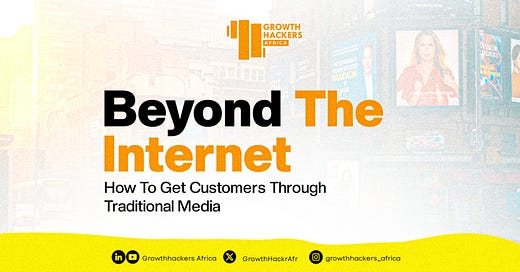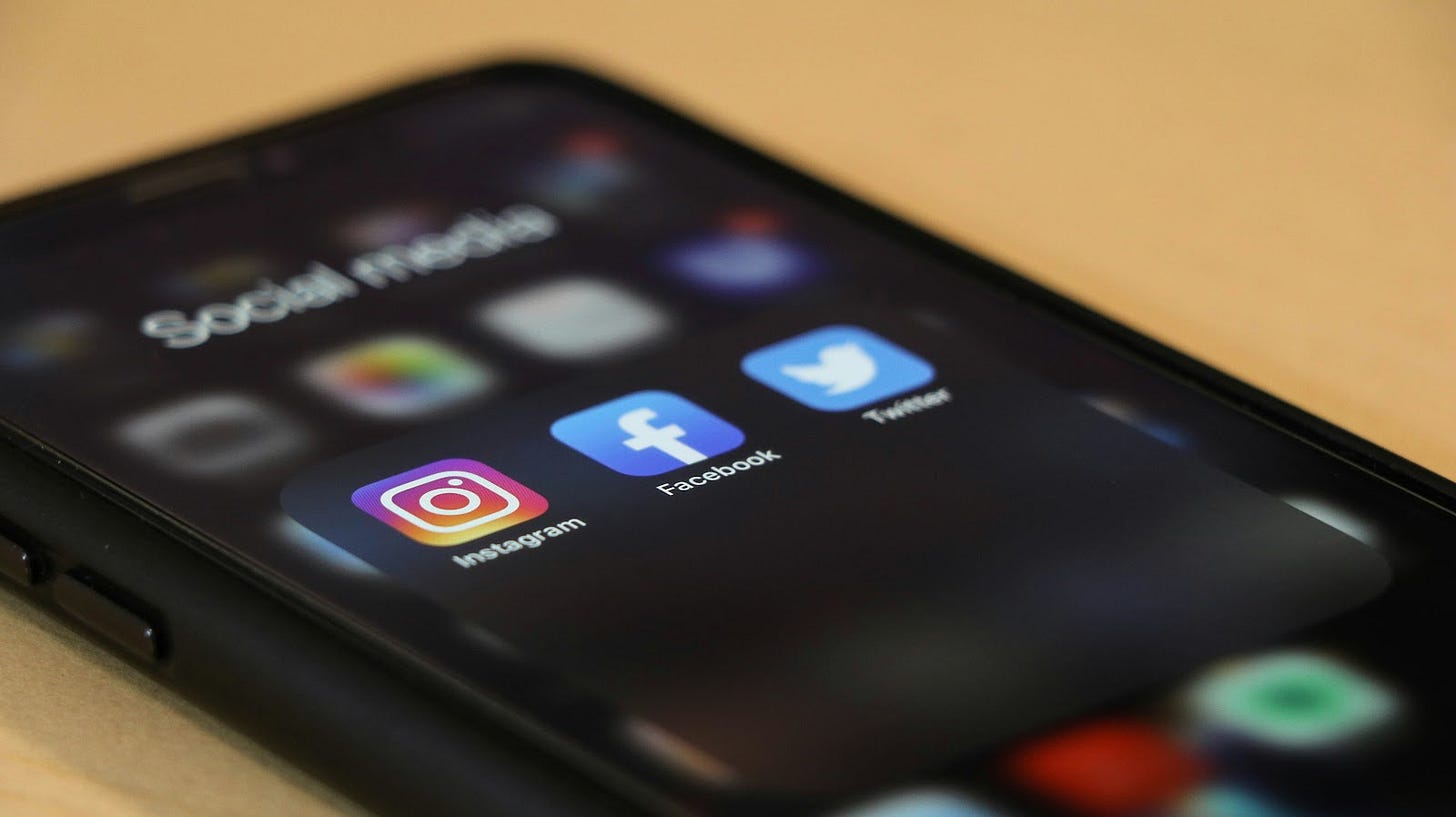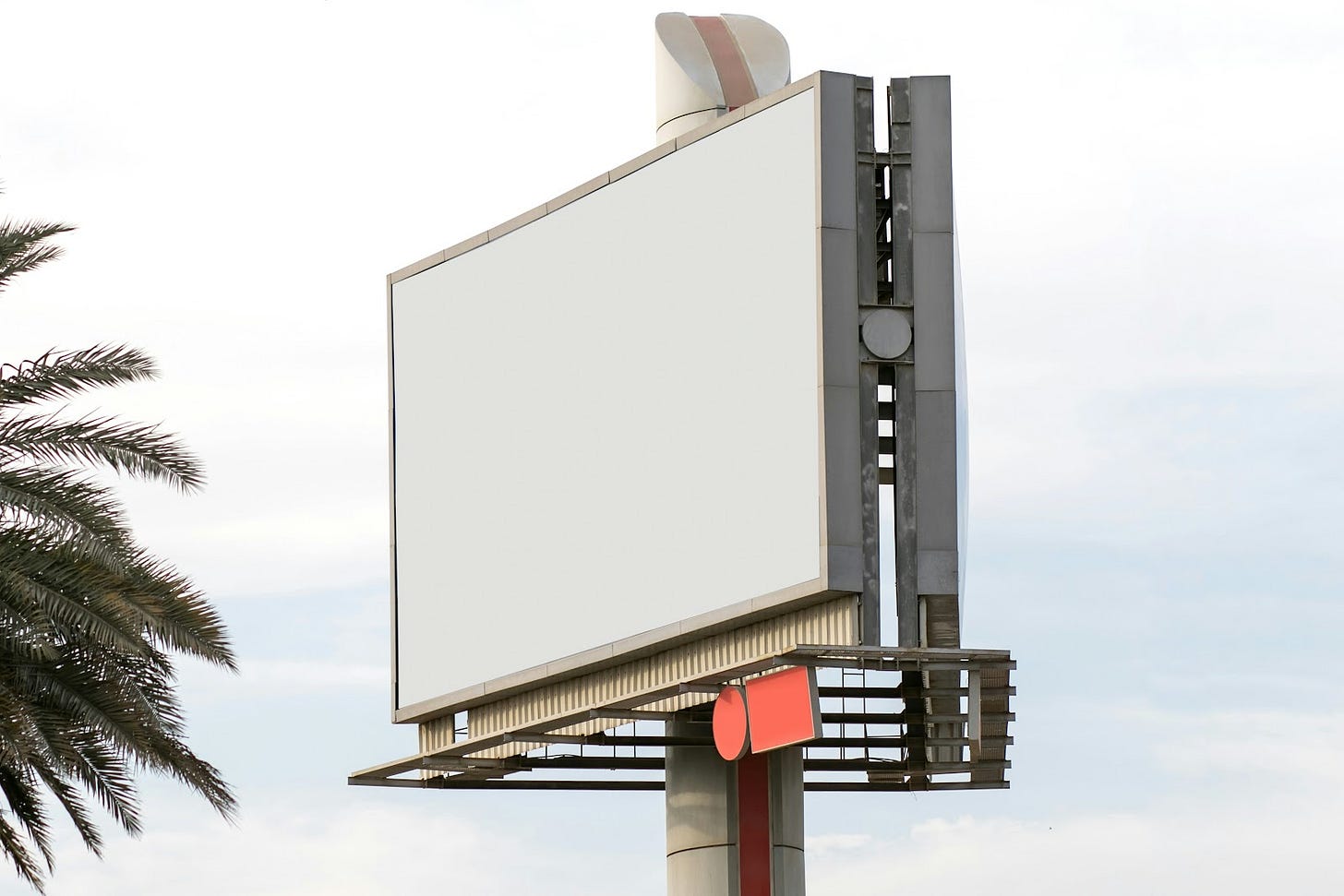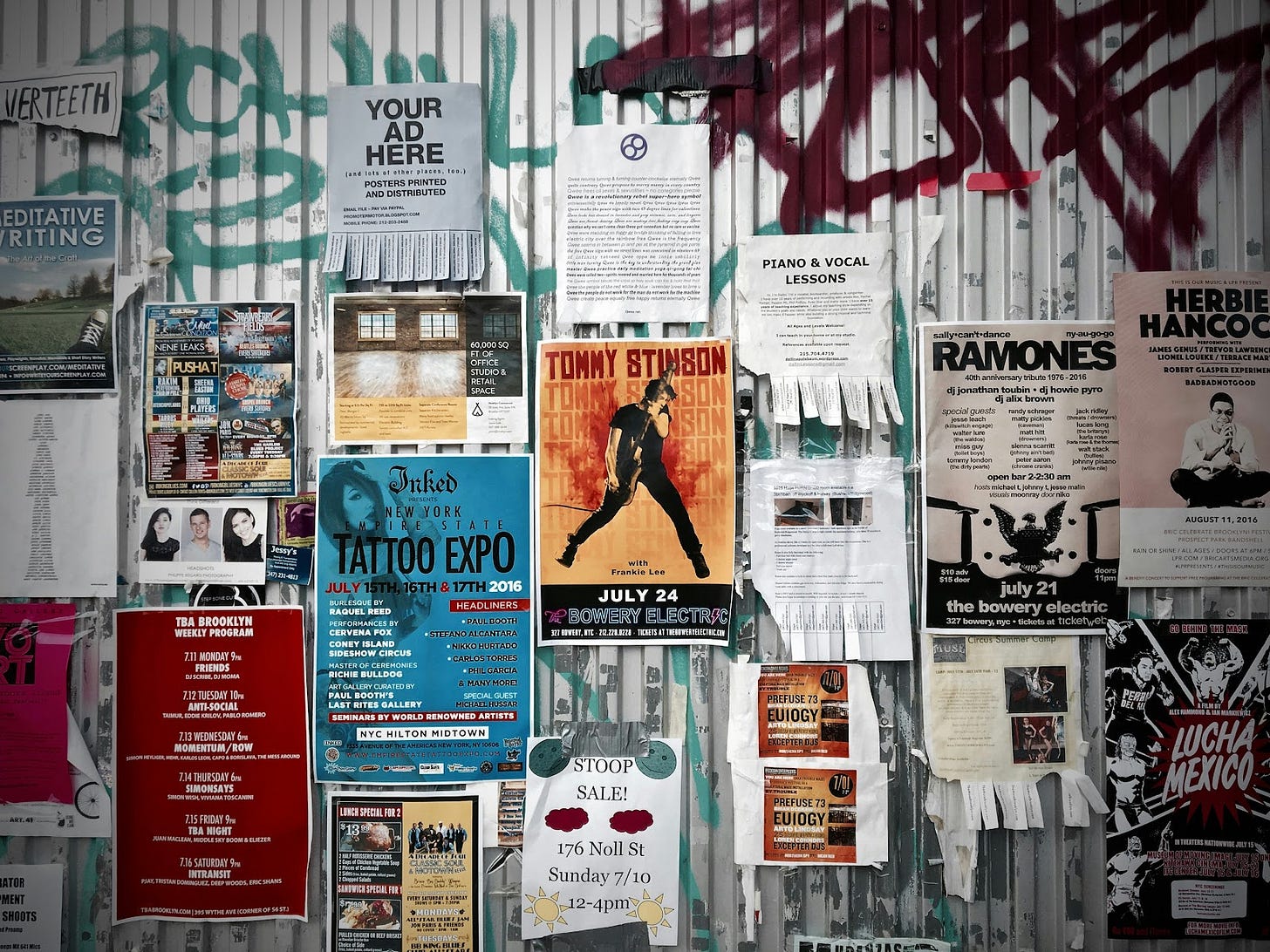Beyond the Internet: How To Get Customers Through Traditional Media
Introduction
As digital nomads, we live in an age where all marketing efforts and strategies are often centred around online platforms, social media and influencer advertising, search engine optimization (SEO), and content marketing. However, traditional media—particularly traditional media, which encompasses TV, radio, newspapers, and various forms of out-of-home advertising —remains a very powerful tool for brand growth. The role of traditional media keeps evolving in the digital marketing landscape, offering opportunities to connect with audiences in public spaces and complement the efforts of digital marketing in various unique ways.
Traditional media advertising refers to all marketing efforts and strategies that aim to reach consumers and potential ones when they are outside of their homes. These strategies include the ever so popular billboards, posters, transit ads, TV, radio, newspapers, and other media forms that are situated in public places. While the efficiency of digital marketing cannot be disputed, Traditional Media has proven resilient and continues to offer significant brand visibility, which is why it is still in use.
The non-stop advancement in the tech space now offers a blend of the traditional format of OOH with digital strategies, enabling brands and companies to enhance their reach and impact through a combination of physical presence and actual data-driven marketing.
Exploring Traditional Media
Traditional Media comes in many different forms, and as such could be classified into five relatable groups.
Static Billboards: These are the most recognizable and traditional form of OOH. They are usually large, positioned along busy roads or highways, and in strategic places in cities around the world, designed to capture the attention of drivers and pedestrians.
Digital Billboards: Unlike static billboards, digital billboards use LED screens to display dynamic, changing advertisements. They offer great flexibility in that they can show multiple ads in a rotation, allowing advertisers to share time slots on a pre-agreed basis. They occupy strategic positions too, like the static billboards, but the blending of technology and advertising makes them more appealing. According to a statistic by Impact Group Marketing, digital billboards have a huge recall rate of 83% and capture 400% more views than traditional billboards.
Street Furniture (Bus Shelters, Benches): These ads are placed on public furniture such as bus stops, benches in parks, kiosks and many other places people visit publically. This form of OOH is especially effective in urban settings with heavy foot traffic.
Transit Advertising: Transit ads include posters and banners displayed on buses, trains, taxis, and other public transport. They are ideal for targeting commuters and travelers. Since commuters are going to be stuck in that space for a while, most times with strangers, it is a welcome getaway from the hustle and bustle of commuting. A study conducted by the International Institute Policy Brief reveals that transit advertising has a positive significant effect on impulse purchase, simply meaning consumers are more likely to make a patronage without being previously aware of the good or service.
Outdoor Advertising (Out-of-Home – OOH): Covers ads placed in public spaces like billboards, street furniture, and transit vehicles. It’s effective for mass visibility and repeated exposure to passersby or commuters.
Point-of-Sale Displays: These are strategically placed in retail locations or near shopping centers to influence consumer purchasing decisions at the moment they are ready to buy. POS displays can include free standing display units (FSDU), shelf edging, dummy packs, strut cards, standees, hanging signs, counter display units (CDU), display packs, display stands, mobiles, posters, and banners.
Traditional advertising offers several advantages which include,
High Visibility: For the fact that they are in public spaces, OOH ads are difficult to ignore and can capture the attention of a wide audience at once!
Wide Reach: OOH has the ability to reach diverse demographics, including those who may not have an online presence. It provides coverage across geographic areas too.
Long Lifespan: Static OOH ads, such as billboards, can remain in place for extended periods, ensuring long-term exposure, and serve as constant reminder.
Non-Intrusive Nature: Unlike digital ads, which can be skipped or blocked and even make use of consumers data, OOH advertisements do not interrupt consumers’ activities. They become part of the visual landscape and do not threaten consumers' privacy.
However, as does every coin, this too has two sides.
High Costs: Depending on the location and format, Traditional Media can be expensive, particularly in prime spots such as city centers or major highways. It's reasonable to remember that if everyone could, every business would be on billboards in big cities, but financial capacity is a criteria.
Limited Targeting Capabilities: Traditional static billboards lack the precise targeting capabilities of digital ads, making it difficult to ensure that the message reaches a specific audience. It's a one-size-fits-all approach.
Difficulty in Measuring Impact: Historically, it has been challenging to measure the direct impact of Traditional Media , as it relies on exposure rather than trackable engagement or conversions.
Integrating OOH with Digital Strategies
The synergy between OOH and digital marketing has become a particularism for brands looking to maximize their advertising impact. By combining the undeniably broad reach of OOH with the precision and accuracy of digital marketing, brands can create holistic campaigns that reach consumers both online and offline.
Retargeting Audiences: Brands can use geofencing technology to retarget individuals who pass by OOH ads. For instance, if someone drives by a billboard, brands can serve them relevant ads on their social media or digital platforms later, reinforcing the message they saw offline.
QR Codes and Interactive Features: One of the simplest ways to merge OOH with digital strategies is by incorporating QR codes, NFC (near-field communication) tags, or SMS call-to-actions into the OOH creative. This encourages passersby to engage with the ad directly through their smartphones, driving them to a website or landing page.
Social Amplification: OOH ads often become conversation starters on social media. Brands can take advantage of social platforms by encouraging people to share their experiences or sightings of the ad, thus extending the reach of the OOH campaign further into the digital realm.
Programmatic DOOH (Digital Out-of-Home): Programmatic buying has revolutionized the way digital billboards are used. This technology allows advertisers to display ads in real-time, based on data like weather conditions, traffic patterns, or demographic insights, ensuring that the right message reaches the right people at the optimal time. This is the perfect example of when technology meets tradition.
Cause Studies of these are:
Peak Milk Billboard Campaigns: Peak Milk consistently uses large static and digital billboards across major cities like Lagos, Abuja, and Port Harcourt. Their campaigns often feature vibrant visuals of families, health benefits, and breakfast moments—positioned in high-traffic areas such as the Third Mainland Bridge in Lagos and major roundabouts.This visibility reinforces brand recall and keeps Peak top-of-mind in the highly competitive FMCG space.
Yoco's Digital and OOH Integration in South Africa: Yoco, a South African startup providing point-of-sale solutions for small or ‘brave’ businesses, utilized both OOH and digital channels to target entrepreneurs in urban areas. Yoco placed digital billboards near high-traffic commercial zones in Johannesburg and Cape Town, showcasing its portable card readers. The digital billboards were timed to show ads during peak business hours, while Yoco used geo-targeted ads on Google and Facebook to retarget those who had been exposed to the OOH ads. This cross-channel approach led to increased website traffic and a noticeable increase in inquiries about their product offerings.
Other case studies are:
Coca-Cola - "Share a Coke" as a case study.
The objective of Coca-cola was to Increase brand engagement and sales among young adults. So, there was a need for a strategy.
Strategy:
1. OOH: Billboard and transit shelter ads featuring personalized bottles with popular names.
2. Digital: Social media campaign encouraging users to share photos with #ShareACoke.
3. Integration: QR codes on OOH ads linked to a microsite for sharing and downloading customized Coke bottles.
Measuring OOH Effectiveness
Tracking Traditional Media performance could be done traditionally, or digitally.
The tradition way is this:
Foot traffic: A direct way to measure the impact of an OOH advertisement, especially billboards or posters, is by assessing the increase in foot traffic to a physical location. Particularly relevant for businesses with street-side operations, it provides a tangible measure of the advertisement's ability to drive potential customers or clients to a specific location.
Sales uptick: This refers to the increase in sales obviously attributable to the OOH campaign. This could translate to an increase in product demos, service inquiries, or actual sales following the launch of an OOH advertisement.
Recall and recognition: While more qualitative, brand recall and recognition are vital indicators of an OOH campaign's success. Surveys or focus groups can be conducted to determine how many people remember seeing the advertisement and the specifics of the message it conveyed. High recall rates indicate that the advertisement was not merely seen but also made a lasting impression on the audience.
And digitally:
Impression counting: By understanding when and where an ad is displayed and identifying who is in the vicinity to see the ad, brands can get a clearer picture of their campaign's visibility.
Attribution reporting: By using geolocation data and attribution links/code on Billboards, brands can monitor how many people who saw the ad later engaged with the brand, be it through visiting a physical location, browsing a website, or interacting with an app.
QR code scans: A direct measure of engagement, this metric tracks the number of people who scanned a QR code on the OOH advertisement.
Spike in Website Traffic: Brands can monitor increases in website visits following the launch of an OOH campaign. A significant uptick in traffic can indicate heightened interest and engagement due to the advertisement.
Social media mentions: This metric tracks increased brand mentions, hashtags, or discussions on social media spaces that can be attributed to the OOH campaign. An increase in social chatter can be a strong indicator of the campaign's reach and resonance with the audience.
Future of Traditional Media
The future of Traditional Media looks really promising as it continues to evolve with the integration of digital tools. The rise of artificial intelligence (AI) and data analytics will allow for more personalized and contextually relevant OOH ads. By analyzing consumer behavioral patterns, brands will be able to deliver tailored messages to specific audiences. Technologies like Artificial Intelligence and Virtual Reality will allow consumers to engage with ads in creative ways blurring the lines between physical (traditional) and digital spaces.
Conclusion
The ability of Traditional Media to reach a broad audience, create lasting impressions and seamlessly integrate with digital strategies makes it an essential component of a proper marketing approach. The future of Traditional Media is poised for further innovation that will allow brands to connect with consumers in a more personalised and engaging way.
More to it, GrowthHackers Africa is hosting a webinar addressing Out-of-Home advertising for growth operators, click here to plug in.






